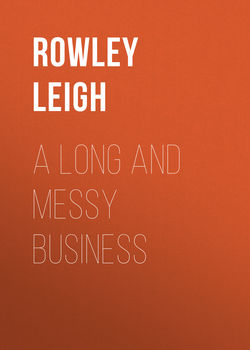Читать книгу A Long and Messy Business - Rowley Leigh - Страница 32
На сайте Литреса книга снята с продажи.
ОглавлениеObserving Liturgical Rhythm
Oeufs en Meurette
‘Surely this recipe could be made simpler. The constant
heating, cooling and reheating especially makes no sense
with coddled eggs’ commented a reader. He was right. The
original recipe called for seven different pans. I have cut it
down to four, which still seems a lot for a simple peasant
dish but there you go: good cooking can be a long and
messy business.
At Lent, I climb once again on to my wagon and
abstain from alcohol. At Le Café Anglais we run a special
menu that follows the path of virtue and features the
burgeoning roots, shoots and leaves of the season, and we
try to eschew fats and carbohydrates. If I tell people that I
adhere to some form of Lenten abstention I am generally
asked if I am a Christian or, more particularly, a Roman
Catholic. I am, in fact, an unbaptised heathen, but I like
to observe the liturgical rhythm of the seasons because
they make sense. After all, no one questions our sense of
religion when we tell them that we intend to celebrate
Christmas or if we want a leg of lamb on Easter Sunday.
My observance of Lent takes a minor form. Originally,
Lent was a serious fast with no meat or animal products
allowed. Gradually the notion of Lenten observance was
eroded, meat being allowed into the diet once a day –
but not on Fridays. Central to the Lenten fast was the
proscription on eggs; it was to use up any eggs that one
made pancakes on the last day before the fasting began.
Similarly the Easter egg was the celebration of the end of
the fast and, of course, the arrival of spring and some fresh
food in a diet dominated by store crops and little else. It
was not for nothing that the period of fasting coincided
with the period when there was not much to eat anyway.
I see some point in abstaining from eggs. I don’t like
to see them taken for granted. In professional kitchens
nowadays eggs rarely come in their usual form of
packaging, the ovoid porous shell that we know of old
and that breaks easily when dropped. Most eggs used for
baking or any other application will come from a carton of
pasteurised yolks or whites. I remember a young Mexican
commis chef who was given the job of breaking sixty eggs
for a cake mixture and proceeded to execute the task,
bringing each egg up to his nose to ascertain it was good.
I think a little of that reverence is rather admirable.
49
February
